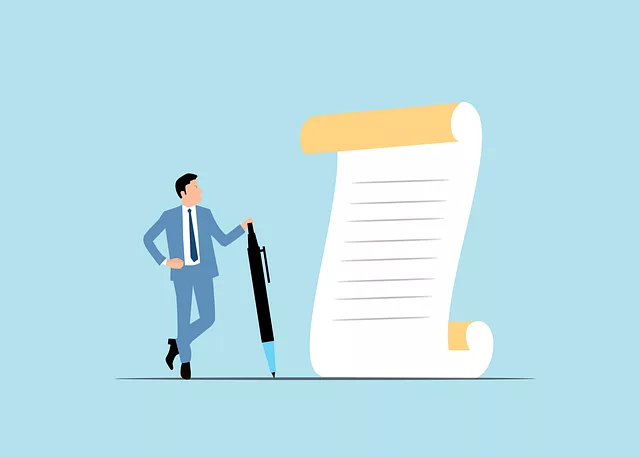Professional Liability (errors and omissions insurance) is crucial coverage for businesses, protecting them from financial losses due to professional negligence like errors, oversights, or contract breaches. It covers legal fees and damages awarded to clients or third parties, safeguarding operations against unpredictable risks. Every industry faces unique challenges, so understanding specific risks and securing adequate coverage is essential. The policy's limits and deductibles should be tailored to individual business needs. By evaluating daily operations, services, and client interactions, businesses can identify potential hazards and mitigate them with appropriate Professional Liability protection, preventing significant legal fees, settlements, and reputational damage.
“Unraveling the intricacies of Professional Liability is essential for every business owner. This comprehensive guide explores the vital coverage that shields your enterprise from potential risks and claims. From understanding the scope of what’s covered, to identifying common triggers and assessing industry-specific exposures, we demystify this crucial aspect of risk management.
Discover key policy components, navigate the claim process, and gain insights through real-world case studies. Empower yourself with knowledge on Professional Liability, ensuring your business is protected against unforeseen challenges.”
Understanding Professional Liability: What It Covers

Professional Liability, often referred to as errors and omissions insurance, is a crucial coverage for businesses, shielding them from financial losses stemming from professional negligence. It protects against claims arising from mistakes, oversights, or failures to provide promised services or advice. This includes instances like providing faulty advice, incomplete work, or breaching contracts due to errors in execution.
The scope of Professional Liability varies by industry and the specific policies, but it commonly covers legal fees and damages awarded to clients or third parties affected by the business’s negligent actions. By understanding what is covered under this liability, businesses can better protect themselves from potential financial disasters and ensure their operations are shielded against unpredictable risks.
Common Risks and Claims That Trigger Coverage

Professional Liability coverage is designed to protect businesses from the financial burden of common risks and claims that can arise in their operations. These often include lawsuits related to negligence, errors, or omissions in services provided to clients. For instance, a marketing agency could face a claim if they mistakenly publish false information about a client’s product, causing reputational damage. Similarly, legal firms may be held liable for failing to discover and disclose crucial details in a case, leading to an unfavorable outcome.
Other triggers for Professional Liability coverage include misrepresentations made in proposals or quotes, faulty advice provided to clients, and even failure to maintain proper security measures leading to data breaches. As businesses expand and interact with more stakeholders, understanding these potential risks and ensuring adequate coverage is crucial for navigating the complexities of modern markets.
Key Components of Business Professional Liability Policies

Business Professional Liability Coverage forms are designed to protect businesses from financial loss resulting from claims of negligence or errors and omissions. These policies consist of several key components that cater to different aspects of business operations. One of the primary elements is the coverage for damages arising from professional services, including legal fees and court costs, which can be significant in cases of malpractice or misconduct.
Additionally, these policies often include provisions for general liability, offering protection against claims of bodily injury or property damage that may occur within a business premises. They also typically cover business owners against claims of personal and advertising injuries, such as slander or misinformation conveyed to clients or customers. The policy’s limits and deductibles, which vary based on the specific needs of the business, are crucial considerations when evaluating Professional Liability Coverage.
How to Assess Your Industry's Specific Exposure

When assessing your business’s need for professional liability coverage, understanding industry-specific risks is paramount. Every sector has its unique challenges and potential liabilities. For instance, a healthcare provider faces different risks than a legal firm or a software development company. Evaluate your day-to-day operations, services offered, and potential client interactions to identify hazards. Consider scenarios where errors, omissions, or negligent acts could lead to financial loss or legal repercussions for your business. Professional liability coverage is designed to protect against these specific exposures by providing financial safeguards when claims are made against your company.
Industry regulations, client expectations, and the nature of services delivered all play a role in shaping these risks. Stay updated on industry trends, best practices, and potential emerging hazards. Consulting with peers or industry associations can offer valuable insights into common challenges faced within your sector. By thoroughly evaluating these factors, you can make an informed decision regarding the extent of professional liability coverage required to mitigate industry-specific exposure effectively.
The Claim Process: Knowing Your Rights and Responsibilities

Understanding the claim process is crucial when it comes to professional liability coverage. As a business owner, knowing your rights and responsibilities during this period can significantly impact the outcome of any legal dispute. When a claim is made against your company, the initial steps involve reviewing and acknowledging the allegation. It’s essential to gather relevant information, documents, or evidence that may support or refute the claim. This process requires prompt action, as timely responses are often critical in professional liability cases.
During this phase, you have specific responsibilities, such as providing a written response to the claim within a reasonable timeframe. Communicating openly with the claimant is key, ensuring all relevant details are shared accurately. Moreover, documenting every step of your response and keeping records organized can be invaluable if the matter proceeds to litigation. Remember, the claim process is a legal procedure, so seeking professional advice from insurance providers or lawyers is advisable to navigate it effectively.
Case Studies: Real-World Examples of Professional Liability

Professional Liability, also known as errors and omissions insurance, is a crucial coverage for businesses dealing with client projects or services. Its significance is often highlighted through real-world case studies, providing tangible insights into potential risks and their outcomes. For instance, consider a law firm that fails to file a critical document on time, leading to a client’s legal claim and substantial financial loss. This scenario underscores the value of Professional Liability, as it can protect the business from legal fees, settlements, and damage to its reputation.
Another example involves an accounting firm that makes mathematical errors in financial reports, causing a company to make poor investment decisions. The subsequent economic downturn severely impacts both the client’s and the accounting firm’s interests. Here, Professional Liability coverage could have mitigated the loss by covering legal costs and compensating the affected party for any financial harm caused due to professional negligence. These case studies emphasize that being prepared with suitable Professional Liability insurance is not just beneficial but essential for businesses aiming to navigate potential liabilities smoothly.
